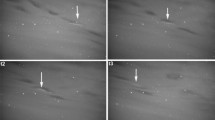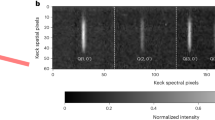Abstract
ON October 11 last a fine aurora was photographed from eight of my aurora stations in southern Norway. The stations Kongsberg, Tömte and Askim, forming a triangle with sides 105 km., 80 km. and 85 km., worked together with my station on the eastern roof of the Oslo Observatory ; all four were connected by telephone and took simultaneous pictures in continual succession as rapidly as possible. Three other stations, Tuddal, Lillehammer and Oscarsborg, forming a triangle with sides 178 km., 159 km. and 101 km., were in the same manner connected with my other station on the western roof of the same Observatory and worked independently of the first set.
This is a preview of subscription content, access via your institution
Access options
Subscribe to this journal
Receive 51 print issues and online access
$199.00 per year
only $3.90 per issue
Buy this article
- Purchase on Springer Link
- Instant access to full article PDF
Prices may be subject to local taxes which are calculated during checkout
Similar content being viewed by others
Author information
Authors and Affiliations
Rights and permissions
About this article
Cite this article
STÖRMER, C. Divided Aurora Rays with one Part in the Sunlit and another in the Dark Atmosphere. Nature 140, 1095–1096 (1937). https://doi.org/10.1038/1401095a0
Issue Date:
DOI: https://doi.org/10.1038/1401095a0
This article is cited by
-
Das Nordlichtspektrum und der Zustand der Nordlichtregion
Die Naturwissenschaften (1938)
Comments
By submitting a comment you agree to abide by our Terms and Community Guidelines. If you find something abusive or that does not comply with our terms or guidelines please flag it as inappropriate.



